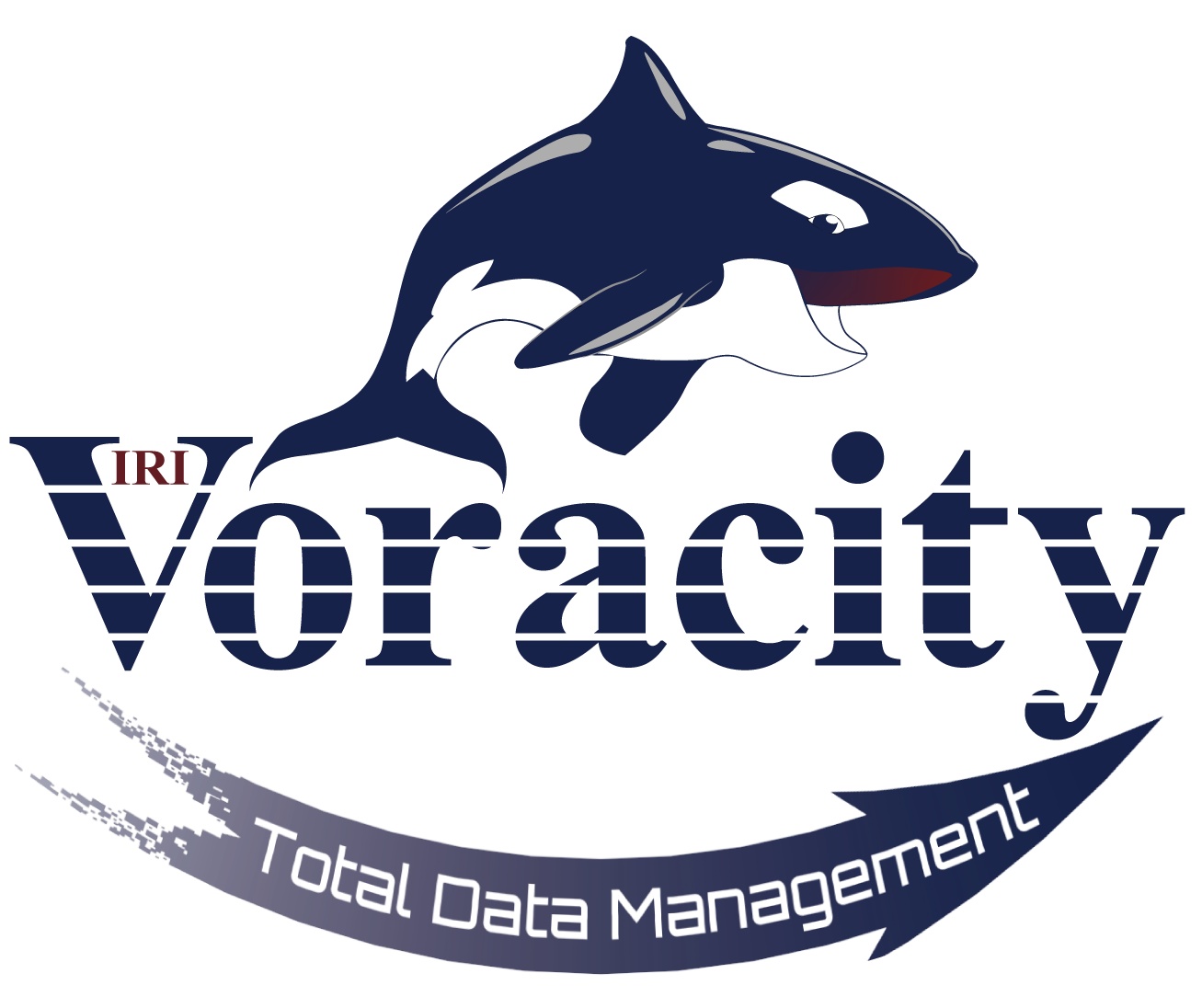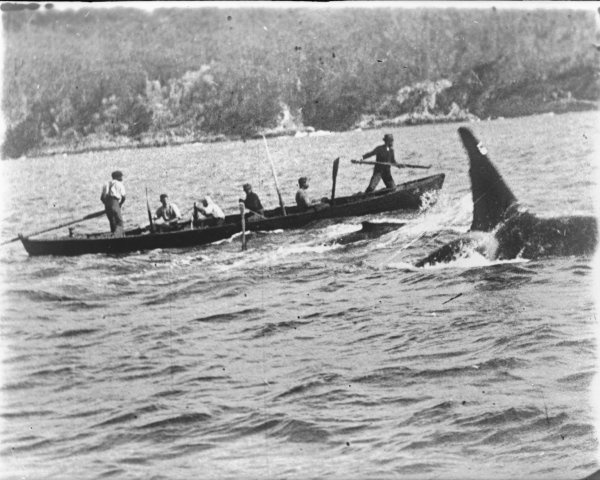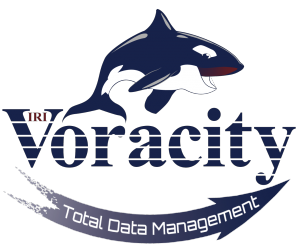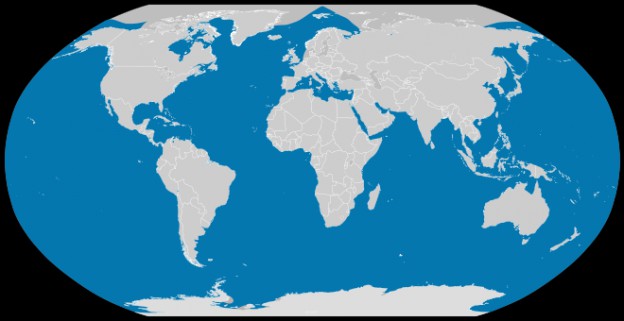
The Orca and IRI Voracity
Intelligent. Fierce. Powerful. Fast. Voracious.
Killer whales, or orcas thrive in every world ocean and in many seas. They are intelligent, lively, and highly social creatures that form close, matrilineal groups. Orcas communicate with calls in individualized dialects unique to their pods. They are an apex predator; and, with their power and wit, have become masters of their domain.
The inhabitable range of the killer whale (shown in blue). Source: www.iucnredlist.org
History and Myth
The orca has long been revered by cultures throughout the world, and still inspires awe at its strength and dominance. The Haida and Tlingit peoples of the Pacific Northwest carve orca images into the wood of a yellow cedar tree. The intellect, voracity, and capability of the orca were not lost on these tribes. “A Tlingit saying from the Pacific Coast is that a hunter by sea would become an orca (killer whale) when he died, and a hunter by land would become a wolf,” S.K. Robisch writes in Wolves and the Wolf Myth in American Literature. The Nazca of Peru – famed for their massive geoglyphs in the desert – prominently featured depictions of orcas in their drawings and artwork. According to Donald Proulx in Nasca Ceramic Iconography: An Overview, the Nazca motifs “include the Mythical Killer Whale, representing the most powerful creature of the sea,” thought to be fortuitous to their agrarian lifestyle.
 Ceramic Nazca Representation of an Orca. Source: National Gallery of Australia
Ceramic Nazca Representation of an Orca. Source: National Gallery of Australia
The orca is not, however, historically limited to the phenomenal interpretations and imaginations of myth-centric, non-Western cultures. It is a creature found even in ancient texts. Roman naturalist, Pliny the Elder, wrote that an orca swam into the port at Ostia (the nearest to Rome) to feast on animal skins that had become flotsam after a shipwreck during the reign of Claudius.
Interestingly, humanity and orcas have had benevolent and, to borrow a term from biology, mutually symbiotic relationships (where both parties benefit). One of the most prominent cases comes from interactions between a pod of orcas and whalers in Australia’s Twofold Bay in the 19th and early 20th centuries. Ocas were getting in the way of whaling efforts until the whalers hired the aboriginal Yuin tribe to help.
The Yuin had a cooperative whaling arrangement with Orca for thousands of years, and believed the orcas were incarnations of ancestors ensuring an ample food supply for the tribe. Their arrangement became reality for European whalers, too, when they worked with the orcas to force whales into Twofold Bay and block their escape to the sea. One orca, known as Old Tom, would travel to the shore “and breach and thrash his tail on the water until he’d attracted the whalers’ attention.” The whalers would then kill the nearby whale, haul it alongside the boat, let the orcas devour the lips and the tongue, and sold the remainder.
 Old Tom and a Whaling Vessel. Source: Charles Eden Wellings (1881-1952). Wikimedia Commons.
Old Tom and a Whaling Vessel. Source: Charles Eden Wellings (1881-1952). Wikimedia Commons.
The Orca and Voracity
The orca was chosen for the IRI Voracity logo in order to embody, in a friendly way, the spirit of this new, total data management platform. Indeed, orcas are sleek, fast, intelligent, and voracious creatures that retain a playful and vivacious demeanor.
Just as the orca is at the top of the ocean’s food chain, Voracity’s mission is to put users at the top of the data value chain — with an insatiable appetite for data of any size and shape. Think about commanding oceans of data, or all the informational value to be fished from the data lake.
Beyond the competitive motivation to be data hungry, think of the competitive advantage to be had by partnering with the most intelligent ‘fisherman’ ever made as you process massive volumes of data quickly through sleek, smart interfaces. Search through, learn from, integrate, and analyze data in more than 150 different sources and targets with fuzzy matching, validation, scrubbing, and standardization capabilities that improve data quality and the fastest known E, T, and L techniques to package and provision data for BI. Use its built-in masking and synthetic test data generation capabilities to eliminate the risks of data breaches and poor prototypes.
The orca, a social animal, thrives in groups. Voracity is a social platform, too. Consider the benefits of a single, user-friendly platform that IT and data architects, business users, and governance teams can share. A seamless, single-point of interaction for data discovery, integration, migration, governance, and analytic functionality in the same GUI with support for cloud-shared metadata management means everyone can work together and adapt to change in one place.
“Vocalizations were collected from three killer whales with a history of exposure to bottlenose dolphins (Tursiops truncatus) and compared with data from seven killer whales held with conspecifics and nine bottlenose dolphins. The three whales’ repertoires were distinguishable by a higher proportion of click trains and whistles. Time-domain features of click trains were intermediate between those of whales held with conspecifics and dolphins. These differences provided evidence for contextual learning.” [Differences in Acoustic Features of Vocalizations Produced by Killer Whales Cross-Socialized with Bottlenose Dolphins. Musser, et al. Acoustical Society of America. 2014.]
Like orcas acquiring vocalizations, Voracity can communicate and interoperate with other technologies, and help its users learn about their data, and how to best transform it. For example, Voracity users can connect to disparate, local and remote data sources and targets in the common hub of Eclipse, preview mapping transformations in what-if fashion, and then run the jobs with CoSort, MapReduce, Spark, Storm, or Tez engines from the same GUI, with the same simple metadata.
Why Dark Blue?
According to color theory (branding psychology), blue is associated with depth, stability, trust, wisdom, and truth. Dark blue represents knowledge, power, integrity, and seriousness. Jacci Howard Bear’s desktop publishing guide goes further:
“Carrying the blue symbolism associated with the darker shades of blue, navy conveys importance, confidence, power, and authority as well as intelligence, stability, unity, and conservatism. Like black, it carries a sense of elegance, sophistication. It’s associated with police and military.”
So in Voracity’s case, the navy orca and logo color speak to the power, confidence and authority its users will have, the intelligence of its design and informational outcomes, the governance and stability that come from that authority, and the elegant sophistication of its single, modern ‘pane of glass’ (IRI Workbench GUI) unifying every data management activity.
Dark blue is also an historically significant color for IRI. As with its first product (CoSort) logo, the current IRI corporate and new Voracity product logos retain the same shade of navy blue that has branded CoSort’s success since the late 1970s. Navy blue is also appropriately indicative of the deep ocean water in which orca’s live, and the oceans of data Voracity ingests. It also manifests in the company’s existing web graphics and “deep dive” blog theme, and it reflects the Atlantic Ocean view that the company has from its Space Coast headquarters.












